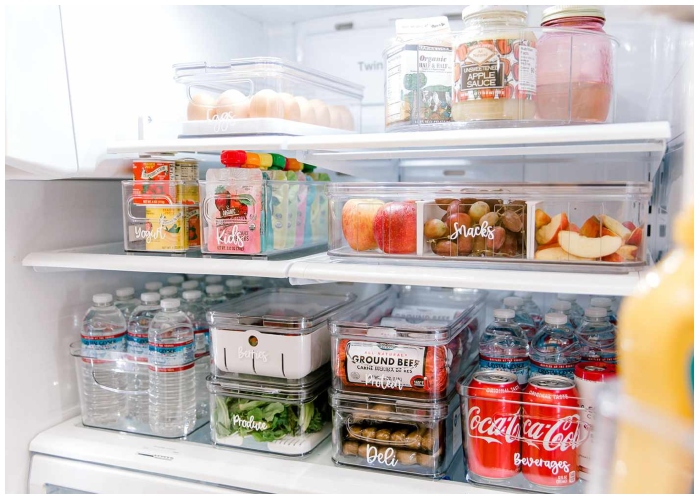What used to be a once-in-a-while cleanup job has now become an everyday life hack. In 2025, arranging your refrigerator—better known as fridge zoning—has become a practical way to save time, reduce spoilage, and make smarter food choices. This technique groups items based on how frequently you use them, their ideal storage temperatures, and food category.
With grocery costs climbing and people aiming to waste less, this method is helping everyone—from busy parents to single students—get more from their fridge. And the best part? It requires no fancy gadgets, just intentional effort and a little know-how.
Why Smart Fridge Organization Works
The idea is simple: when each type of food has a designated place, it’s easier to track what you have, avoid letting things go bad, and plan meals efficiently. Instead of tossing everything into random spots, you group food logically based on how you live and cook.

Think of it as giving your fridge a “workflow”—helping you prep, eat, and shop smarter. It’s not just about aesthetics—it’s a strategy for reducing chaos in your kitchen.
How to Begin Structuring Your Fridge
You don’t need to spend a fortune to get started. Every fridge already has unique temperature zones—here’s how to use them wisely:
- Upper Shelves: These areas are easy to access, making them ideal for items like leftovers, drinks, yogurt, or ready-to-eat meals.
- Center Racks: Use these for foods you use often—prepped meals, packed lunches, or cooked proteins.
- Bottom Shelf: This section stays the coldest. It’s best for storing uncooked meat or seafood. Use a plastic tray to catch leaks.
- Produce Drawers: These bins are designed for fruits and vegetables. Keeping them separate helps maintain the right humidity and extends freshness.
- Fridge Door: The warmest part of the fridge. Use it for condiments, sauces, and pickled goods. Avoid placing dairy here—even if the door has egg or milk slots.
Use Labels to Make Zones Obvious
Adding washable stickers or erasable tags helps keep the system clear and makes it easy for others in the household to follow. Here are a few examples:
- “Eat Soon” for items about to expire
- “Snacks” for easy grab-and-go food
- “Morning Essentials” for things like butter, cream cheese, or boiled eggs
- “Prepped Items” for cut veggies or marinated proteins
These signs save time and help reduce food waste by making everything visible and accessible.
Helpful Tools That Support the System
While not absolutely necessary, these items can simplify the process:
- See-Through Bins: Group similar items while keeping them visible
- Rotating Trays: Useful for sauces or condiments in deep corners
- Temperature Monitors: Ensure raw meats stay at safe cold levels
- Date Markers: Helps you track when items were opened
All of these are affordable, easy to clean, and available in most home supply stores or online.
Why People Love It in 2025
This method is growing in popularity for good reason:
- Food stays fresh longer
- Shopping becomes faster—you instantly know what’s missing
- Prep is quicker—no more digging for ingredients
- Nutrition improves—healthy foods are front and center
- Cross-contamination is prevented by separating raw from cooked items
It also helps reduce the stress of kitchen clutter and makes cooking more enjoyable.
In a time when every peso and every minute counts, zoning your refrigerator is a small change with big benefits. It turns your fridge into a personal food station—organized, efficient, and waste-free.
Whether you’re meal planning, feeding a big family, or just tired of letting food go to waste, this smart system helps make your daily routine smoother. Thoughtful fridge storage isn’t just a passing trend—it’s a lifestyle choice that brings more order to your kitchen and m